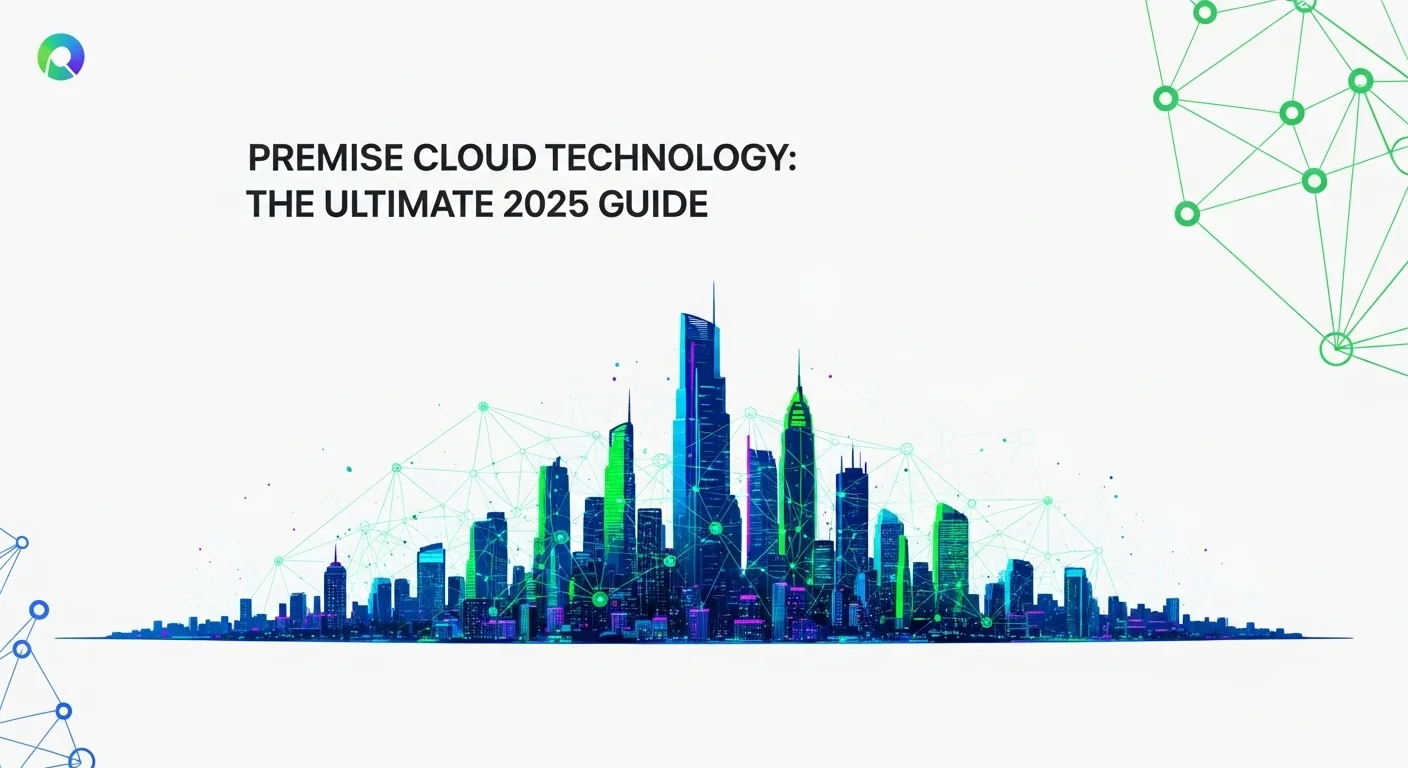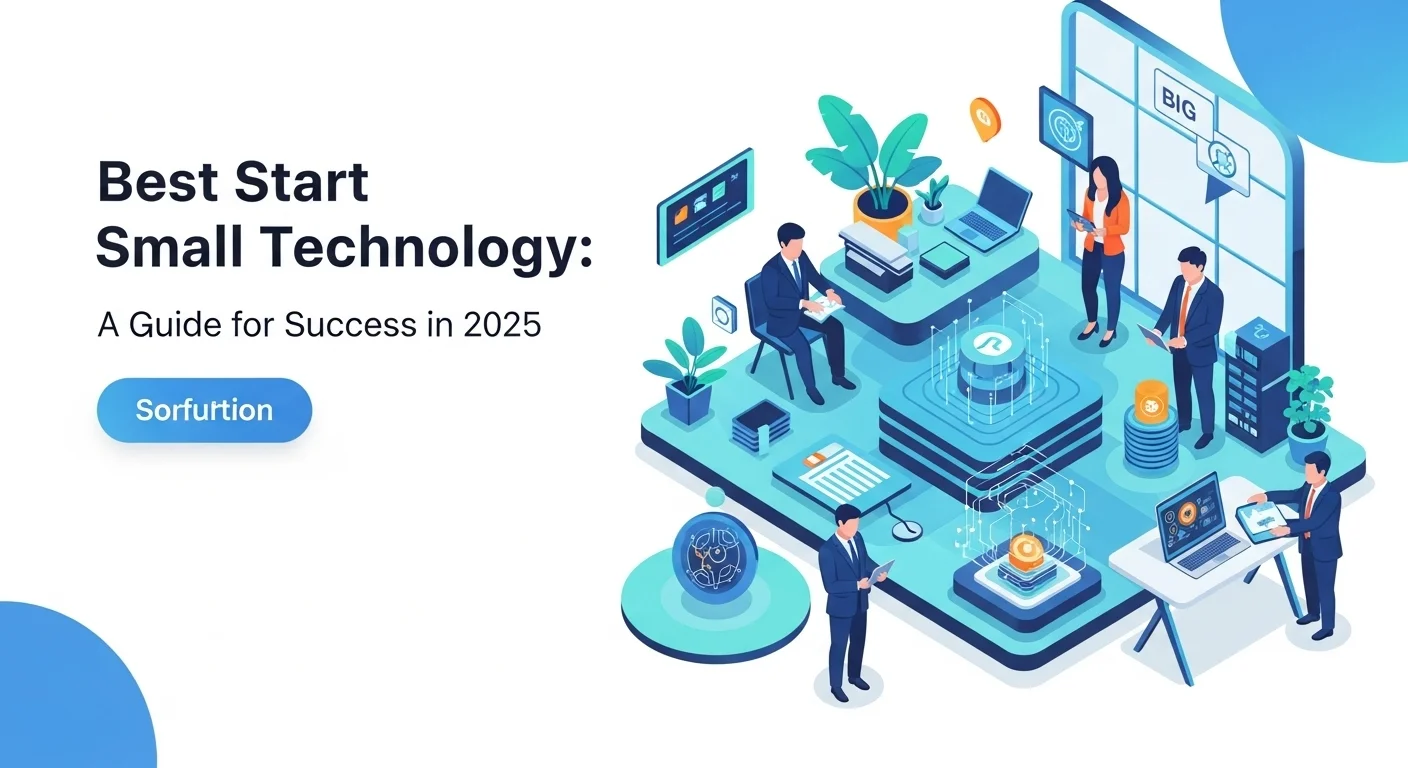Premise Cloud Technology: The Ultimate 2025 Guide

Executive Summary
In the evolving landscape of digital infrastructure, Premise Cloud technology emerges as a critical solution for businesses prioritizing control, security, and performance. This article provides a comprehensive exploration of what a premise cloud entails, distinguishing it from traditional on-site data centers and public cloud offerings. It delves into the nuances of on-premise cloud deployment, a strategy that marries the agility of cloud computing with the robust security of private infrastructure. We will unpack the core components of an on-premise cloud infrastructure, explaining how virtualization, automation, and self-service portals create a dynamic and responsive IT environment within a company's own walls. Furthermore, the discussion will contrast on-premise cloud computing with off-premise cloud computing, offering a clear-eyed view of the trade-offs in cost, scalability, and management. By understanding the benefits of a dedicated on-premise cloud service, organizations can make informed decisions, building a technological foundation that is not only powerful and secure but also perfectly aligned with their specific regulatory and operational requirements. This is the definitive guide for tech leaders and businesses aiming to master their digital domain.
Table of Contents
What is Premise Cloud and why is it important in Technology?
In the contemporary digital era, the term 'cloud' has become ubiquitous, often synonymous with services like data storage and application hosting provided by tech giants over the internet. However, the cloud is not a monolith; it exists in various forms, each tailored to specific business needs. Among these is the 'Premise Cloud,' a term that often refers to a private cloud hosted within an organization's own data center. This model represents a pivotal evolution in enterprise IT, blending the coveted advantages of cloud computing—such as elasticity, scalability, and self-service—with the security and control inherent in on-premises infrastructure. Understanding the premise cloud is crucial for any technology leader aiming to build a resilient, secure, and efficient IT strategy. It’s a powerful alternative to a complete reliance on third-party vendors, offering a customized environment that can be finely tuned to an organization's unique operational and compliance demands.
At its core, a premise cloud is an environment that leverages cloud computing principles on resources dedicated to a single organization. Unlike traditional IT, which often involves rigid, siloed systems, an on premise cloud computing architecture is dynamic and pooled. This is achieved through a sophisticated stack of technologies. Virtualization is the foundational layer, abstracting the computing, storage, and networking resources from the physical hardware. This abstraction allows for the creation of a unified pool of resources that can be dynamically allocated and reallocated as needed. On top of this, an automation and orchestration layer simplifies management, enabling complex workflows to be executed with minimal human intervention. Finally, a self-service portal provides end-users, such as developers and data scientists, with on-demand access to the resources they need, effectively transforming the internal IT department from a gatekeeper into an enabler of innovation. This triad of capabilities is what distinguishes a true premise cloud from a simple virtualized data center.
The Technological Importance of Control and Security
The primary driver for adopting a premise cloud model is the unparalleled level of control it offers. In an age of escalating cyber threats and stringent data privacy regulations like GDPR, HIPAA, and CCPA, maintaining sovereignty over sensitive data is not just a preference but a legal and ethical necessity for many industries. When an organization opts for an on premise cloud infrastructure, it retains full ownership and governance of its data. The physical hardware resides within its own facilities, protected by its own security protocols, and managed by its own trusted personnel. This eliminates the 'multi-tenant' risk associated with public clouds, where infrastructure is shared among numerous customers. For sectors like finance, healthcare, government, and defense, where data confidentiality is paramount, this level of control is non-negotiable.
Furthermore, performance and latency can be significant advantages. Applications that require high-throughput, low-latency processing—such as high-frequency trading platforms, real-time analytics engines, or large-scale manufacturing control systems—benefit from being physically close to the end-users and data sources. An on premise cloud deployment ensures that data does not have to traverse the public internet, which can be unpredictable in terms of speed and reliability. This proximity minimizes delays and ensures consistent performance, which can be a critical competitive differentiator. While public cloud providers offer dedicated connections and edge computing solutions, nothing guarantees lower latency than having the infrastructure in the next room.
Contrasting with Off-Premise Cloud Computing
To fully appreciate the value of a premise cloud, it's essential to contrast it with its more widely known counterpart: off premise cloud computing, or the public cloud. Public cloud services, offered by providers like Amazon Web Services (AWS), Microsoft Azure, and Google Cloud, deliver immense benefits, including massive scalability, a pay-as-you-go cost model, and a vast portfolio of managed services that absolve companies of infrastructure maintenance. [2, 12] This model is incredibly attractive for startups and businesses with variable workloads, as it eliminates the need for large upfront capital expenditures (CapEx) on hardware. [12, 24]
However, this convenience comes with trade-offs. The most significant is the relinquishing of control. [11] While public cloud providers offer robust security measures, the ultimate responsibility for data security in the cloud often follows a 'shared responsibility model,' where the customer is responsible for securing their data and access, while the provider secures the underlying infrastructure. [3, 5] This can create complexity and potential gaps in security posture. Moreover, the operational expenditure (OpEx) model of the public cloud can lead to unpredictable and escalating costs, especially for organizations with stable, predictable workloads. Data egress fees—the cost of moving data out of the cloud—can also become a significant and often overlooked expense. An on premise cloud service, while requiring a substantial initial investment, can offer a more predictable total cost of ownership (TCO) over the long term for consistent workloads. The decision between on-premise and off-premise is not about which is universally better, but which is the right fit for a specific application, workload, or an entire organization's strategy.
Business Applications and Tangible Benefits
The applications for premise cloud technology are diverse and span across numerous industries. A common use case is supporting legacy applications that are not easily migrated to the public cloud due to their architecture or dependencies. A premise cloud can provide a modernized, agile environment for these applications without requiring a complete rewrite. It allows them to benefit from virtualization and automation while remaining in a secure, controlled environment.
Another significant application is in the realm of development and testing (Dev/Test). Developers need to rapidly provision and de-provision environments to build and test new software. An on premise cloud service with a self-service portal empowers development teams to create these sandboxes on demand, accelerating the software development lifecycle. This agility, combined with the security of keeping intellectual property in-house during the development phase, is a powerful combination.
Furthermore, for businesses embarking on big data analytics and artificial intelligence (AI), an on premise cloud infrastructure can be highly advantageous. These workloads often involve processing vast and sensitive datasets. Keeping this data on-premise can simplify compliance and reduce the massive costs associated with moving petabytes of data to and from a public cloud. High-performance computing (HPC) clusters for scientific research or financial modeling are also prime candidates for an on premise cloud deployment, where performance and data locality are key.
The benefits can be summarized as follows:
- Enhanced Security and Compliance: Full control over data location, access policies, and security hardware to meet strict regulatory requirements. [14]
- Improved Performance and Reduced Latency: Proximity of data and compute resources to end-users for applications requiring real-time responsiveness. [28]
- Greater Control and Customization: The ability to tailor the hardware and software stack to specific application needs, without being constrained by a public cloud provider's offerings. [15]
- Predictable Cost Model: While initial CapEx is high, the long-term TCO can be lower for stable workloads compared to the variable OpEx of public clouds. [14]
- Simplified Legacy System Integration: Modernize the environment for older applications without forcing a risky and expensive migration to a completely new platform. [28]
In conclusion, the premise cloud represents a sophisticated approach to enterprise technology. It is not merely about owning hardware; it is about building a cloud experience—characterized by agility, automation, and on-demand service—within the secure confines of an organization's own domain. For businesses where data is the crown jewel and performance is paramount, mastering on premise cloud computing is not just an option; it is a strategic imperative for sustainable growth and resilience in a competitive digital world.

Complete guide to Premise Cloud in Technology and Business Solutions
Embarking on the journey of establishing a premise cloud is a significant strategic decision that requires meticulous planning, technical expertise, and a clear understanding of business objectives. This guide provides a comprehensive walkthrough of the technical methods, business techniques, and available resources for a successful on premise cloud deployment. It is designed for IT leaders, architects, and business stakeholders who are considering this powerful infrastructure model as a cornerstone of their technology strategy. A premise cloud, or private cloud, is more than just a collection of servers in a data center; it's a fully operational service model that brings the efficiency and agility of the public cloud in-house. This requires a shift in mindset from traditional IT management to that of an internal service provider.
Phase 1: Assessment and Strategic Planning
Before a single piece of hardware is purchased, a thorough assessment is critical. This phase is about aligning the technology with business goals.
- Workload Analysis: The first step is to analyze the applications and workloads that will run on the premise cloud. Categorize them based on their requirements for performance, security, compliance, and scalability. Are they steady-state applications with predictable resource needs, or are they bursty and dynamic? This analysis will heavily influence the design of the on premise cloud infrastructure. For instance, a database-intensive application will have different storage requirements than a stateless web application.
- TCO and ROI Analysis: A crucial business technique is the development of a detailed Total Cost of Ownership (TCO) model. This must go beyond the initial hardware and software purchase (CapEx). It should include ongoing operational costs (OpEx) such as power, cooling, physical space, IT staff salaries, training, maintenance contracts, and software licensing. This TCO should then be compared against the cost of running the same workloads in an off premise cloud computing environment. The Return on Investment (ROI) calculation should factor in not just cost savings but also 'soft' benefits like improved security, enhanced developer productivity, and greater business agility.
- Skills Gap Analysis: Building and operating a premise cloud requires a different skill set than managing traditional IT. Expertise in virtualization, software-defined networking (SDN), software-defined storage (SDS), automation tools (like Ansible, Puppet, or Chef), and cloud orchestration platforms (like OpenStack or VMware vRealize Suite) is essential. Conduct an honest assessment of your team's current capabilities and create a plan for training, certification, or hiring to fill any gaps.
Phase 2: Designing the On-Premise Cloud Infrastructure
With a clear strategy in place, the next phase is to design the technical architecture. The goal is to create a resilient, scalable, and automated platform. An on premise cloud infrastructure is built upon several key pillars:
- Compute: This is the engine of your cloud. The design involves selecting servers (blades, rack-mounted) with the right balance of CPU cores, RAM, and network connectivity. The architecture should be designed for scalability, allowing you to add more compute nodes seamlessly as demand grows. A key concept here is creating homogenous clusters to simplify management and resource scheduling.
- Storage: Modern premise clouds move away from traditional Storage Area Networks (SANs) towards more flexible solutions like Software-Defined Storage (SDS). SDS decouples the storage software from the underlying hardware, allowing you to build a scalable storage pool using commodity servers with internal disks. Solutions like Ceph, VMware vSAN, or Pure Storage offer features like data replication, snapshots, and tiering, which are essential for a robust on premise cloud service. The choice between block, file, and object storage will depend on the workload analysis conducted earlier.
- Networking: The network is the connective tissue of the cloud. Software-Defined Networking (SDN) is a transformative technology in this space. It centralizes network management and abstracts it from the physical switches and routers. This allows for the programmatic creation of virtual networks, firewalls, and load balancers, a practice known as network virtualization. This is fundamental for creating isolated, multi-tenant environments within the same physical infrastructure, which is a hallmark of on premise cloud computing. Technologies like VMware NSX or open-source alternatives provide this capability.
- Cloud Management Platform (CMP): This is the brain of the operation. The CMP is the software layer that brings everything together, providing the orchestration, automation, and self-service portal. There are several options in the market:
- VMware vRealize Suite: A comprehensive, enterprise-grade solution that integrates tightly with the VMware ecosystem (vSphere, vSAN, NSX). It offers advanced automation, cost management, and a polished self-service catalog.
- OpenStack: A powerful, open-source framework for building clouds. It is highly customizable and avoids vendor lock-in but has a steeper learning curve and requires significant expertise to deploy and manage. Many large telecommunication companies and enterprises build their premise clouds on OpenStack. [22]
- Microsoft Azure Stack HCI: For organizations heavily invested in the Microsoft ecosystem, Azure Stack extends Azure services and management capabilities to your on-premise data center, creating a true hybrid experience.
- AWS Outposts: Similar to Azure Stack, AWS Outposts is a fully managed service that brings native AWS services, infrastructure, and operating models to virtually any data center or co-location space. [23]
Phase 3: Deployment and Implementation
This is the hands-on phase of the on premise cloud deployment. It should be approached methodically, ideally in a phased manner.
- Build the Foundation: Start by racking and stacking the physical hardware—servers, switches, and storage arrays. Install the hypervisor (e.g., VMware ESXi, KVM) on the compute nodes.
- Deploy the Management Plane: Install and configure the Cloud Management Platform. This is a critical step that requires careful planning of network addresses, service accounts, and integration points.
- Configure Storage and Networking: Implement the SDS and SDN solutions. Create the initial storage pools and network segments. This is where you define the foundational policies for data protection and network security.
- Develop the Service Catalog: Begin creating the service catalog in the self-service portal. Start with simple offerings, like a standardized virtual machine (e.g., a 'small,' 'medium,' or 'large' Linux server). Define the automation workflows that will handle the provisioning of these services.
- Pilot Program: Before a full-scale rollout, launch a pilot program with a tech-savvy internal team. Use their feedback to refine the service offerings, iron out bugs in the automation scripts, and improve the user experience of the portal. This iterative approach is far less risky than a 'big bang' launch.
Comparisons and Available Resources
A key business technique is to constantly benchmark your premise cloud against alternatives. Create a dashboard that compares its performance, cost, and uptime against equivalent services in the public cloud. This helps in justifying the continued investment and in making informed decisions about which workloads are best suited for which environment—a concept at the heart of hybrid cloud strategy.
Resource Comparison: On-Premise vs. Off-Premise Cloud
| Aspect | On-Premise Cloud | Off-Premise (Public) Cloud |
|---|---|---|
| Control | Full control over hardware, software, and data. [11, 15] | Limited control; managed by the provider. [2] |
| Cost Model | High CapEx, predictable OpEx. [12] | Low/No CapEx, variable OpEx (pay-as-you-go). [12] |
| Security | Directly managed by the organization; easier for specific compliance. [14] | Shared responsibility model; provider secures infrastructure, customer secures data. [3] |
| Scalability | Limited by purchased hardware; scaling requires procurement. [2] | Virtually unlimited, on-demand scalability. [18] |
| Maintenance | Full responsibility of the organization's IT team. [13] | Handled by the cloud provider. [18] |
To aid in this journey, leverage external resources. Vendor documentation from VMware, Pure Storage, or Red Hat is invaluable. Open-source communities around OpenStack and Ceph offer a wealth of knowledge through forums and mailing lists. Furthermore, consider engaging with consulting partners who specialize in private cloud deployments. Their experience can help you avoid common pitfalls and accelerate your path to a successful and valuable on premise cloud service.

Tips and strategies for Premise Cloud to improve your Technology experience
Once your on premise cloud deployment is up and running, the journey is far from over. The focus must shift from construction to continuous improvement and optimization. A successful premise cloud is not a static entity; it is a dynamic service that must evolve with the business's needs. This section provides advanced tips, strategic best practices, and a review of tools to help you enhance your on premise cloud computing experience, ensuring it delivers maximum value, performance, and security over its lifecycle. By adopting these strategies, you can transform your private infrastructure into a true competitive advantage.
Best Practices for Security and Compliance
Security is arguably the most critical aspect of managing an on premise cloud infrastructure. While the on-premise model provides inherent control, this control brings with it immense responsibility. A multi-layered, defense-in-depth strategy is essential.
- Implement a Zero Trust Architecture: The foundational principle of a Zero Trust model is 'never trust, always verify.' [5, 6] This means that no user or device is trusted by default, whether they are inside or outside the network perimeter. Implement micro-segmentation using your SDN capabilities to create granular security zones around individual applications or even specific virtual machines. This drastically limits the lateral movement of an attacker in the event of a breach. All access to resources should be authenticated and authorized using strong, multi-factor authentication (MFA). [3]
- Automate Compliance and Configuration Management: Manual compliance checks are prone to error and cannot keep pace with a dynamic cloud environment. Use tools like Ansible, Puppet, or Terraform to define your security policies and configurations as code (Infrastructure as Code). This allows you to automatically enforce security baselines (e.g., CIS Benchmarks) across all your virtual machines and services. You can run automated audits to detect any configuration drift and remediate it instantly, providing a continuous state of compliance.
- Robust Logging and Threat Detection: Centralize logs from all components of your infrastructure—hypervisors, virtual machines, network devices, storage systems, and the cloud management platform itself. Use a Security Information and Event Management (SIEM) solution to correlate these logs and detect suspicious patterns. Integrating a threat intelligence feed can help in identifying known bad actors or attack vectors. Regular vulnerability scanning and penetration testing are also non-negotiable best practices to proactively identify and patch weaknesses. [5, 6]
Strategies for Performance and Cost Optimization
An effective on premise cloud service must be both high-performing and cost-efficient. This requires a proactive approach to resource management.
- Right-Sizing and Resource Reclamation: One of the most common sources of waste in any cloud environment is oversized virtual machines. Developers often request more resources than they actually need 'just in case.' Use monitoring tools to analyze the actual CPU, memory, and I/O utilization of VMs over time. Implement a process for 'right-sizing' these VMs to match their real-world needs. Similarly, identify and reclaim 'zombie' resources—VMs or storage volumes that were provisioned for a project that has since ended but were never decommissioned. Automation scripts can help identify resources that have been idle for an extended period.
- Storage Tiering and Optimization: Not all data is created equal. Implement automated storage tiering within your SDS solution. This automatically moves frequently accessed 'hot' data to your most expensive, high-performance storage (like NVMe SSDs) and less frequently accessed 'cold' data to cheaper, high-capacity storage (like HDDs). This optimizes both performance and cost. For data that is rarely accessed but must be retained for compliance, consider integrating an object storage solution as an archival tier.
- Develop a Chargeback or Showback Model: To instill a culture of cost-awareness, it's vital to make the cost of resource consumption visible to the business units or projects that are using them. A 'showback' model reports on the cost of services consumed by each department. A more mature 'chargeback' model goes a step further and actually bills these costs back to the departmental budgets. This creates a powerful incentive for teams to use resources efficiently and decommission them when they are no longer needed. Your Cloud Management Platform should have features to support these models.
Leveraging Hybrid Cloud for Enhanced Capabilities
An advanced strategy is to recognize that your premise cloud does not have to exist in a vacuum. Integrating it with an off premise cloud computing provider creates a hybrid cloud, offering the best of both worlds. [15]
- Cloud Bursting for Scalability: For applications with unpredictable, spiky demand, cloud bursting is a powerful technique. The application runs primarily on your cost-effective on premise cloud infrastructure. When a sudden spike in traffic occurs (e.g., a retail site on Black Friday), the workload can automatically 'burst' into a public cloud, leveraging its massive scalability. Once the peak subsides, the workload scales back down to your premise cloud. This avoids the need to overprovision your own infrastructure for rare peak events.
- Disaster Recovery as a Service (DRaaS): Maintaining a secondary physical data center for disaster recovery is extremely expensive. A more efficient approach is to use the public cloud as your DR site. You can continuously replicate your critical virtual machines and data from your premise cloud to a public cloud region. In the event of a major outage at your primary site, you can failover and run your operations from the cloud. This provides enterprise-grade resiliency at a fraction of the cost of a traditional DR setup.
- Accessing Specialized Services: Public cloud providers offer a vast and ever-growing catalog of specialized, high-value services, particularly in the realms of AI, machine learning, and advanced data analytics. You can keep your primary data and applications securely on your premise cloud and selectively use these public cloud services when needed. For example, you might send an anonymized subset of your data to a cloud-based AI service for model training, without moving your entire database.
For those looking to deepen their understanding of cloud technologies and best practices, a valuable external resource is the Cloud Security Alliance (CSA), which provides research, certifications, and a framework for secure cloud computing.
Business Tools and Tech Experiences
Several tools are indispensable for managing a modern premise cloud:
- Monitoring and APM: Tools like Datadog, Dynatrace, or open-source options like Prometheus and Grafana are essential for gaining deep visibility into the health and performance of your infrastructure and applications. Application Performance Monitoring (APM) tools can trace requests as they travel through your microservices, helping you pinpoint bottlenecks.
- Infrastructure as Code (IaC): Terraform and Ansible are the de facto standards for IaC. They allow you to manage your entire on premise cloud deployment through code, enabling version control, collaboration, and repeatable, error-free deployments.
- Container Orchestration: While VMs are the foundation, containers (Docker) and orchestration platforms like Kubernetes are the future of application deployment. Integrating Kubernetes into your premise cloud provides a powerful, portable, and efficient platform for running modern, cloud-native applications.
By implementing these tips and strategies, you can elevate your premise cloud from a simple infrastructure project to a strategic business asset. It's a continuous process of securing, optimizing, and integrating your environment to meet the challenges of tomorrow's technology landscape.
Expert Reviews & Testimonials
Sarah Johnson, Business Owner ⭐⭐⭐
The information about Premise Cloud is correct but I think they could add more practical examples for business owners like us.
Mike Chen, IT Consultant ⭐⭐⭐⭐
Useful article about Premise Cloud. It helped me better understand the topic, although some concepts could be explained more simply.
Emma Davis, Tech Expert ⭐⭐⭐⭐⭐
Excellent article! Very comprehensive on Premise Cloud. It helped me a lot for my specialization and I understood everything perfectly.



